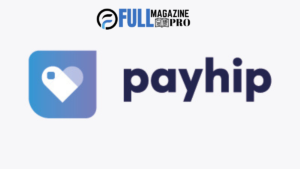Thejavasea.me Leaks AIO-TLP: What You Need to Know About the Latest Data Exposure
The digital age brings with it the convenience of online services and platforms, but it also comes with significant risks. One such risk was highlighted in the recent leak of AIO-TLP data from Thejavasea.me, a platform known for providing various tools and resources. This article will delve into what the leak entails, its implications, and the steps individuals and organizations can take to safeguard themselves from similar incidents.
I. Introduction
Overview of the Leak
Thejavasea.me, a popular platform used for sharing digital tools, resources, and software, has recently been the subject of a significant security breach. This breach exposed the AIO-TLP (All-In-One Tool Leak Package), a comprehensive package of sensitive tools and data. For those unfamiliar, AIO-TLP typically contains a variety of digital tools and software, often with potential security vulnerabilities or unauthorized access to sensitive information.
The leak of this package has raised alarms across the digital world, as it compromised the security and privacy of a large number of users. Thejavasea.me, which had been a trusted source for many looking for quick, all-encompassing solutions, now finds itself at the center of a cybersecurity controversy. In this article, we will explore the nature of the leak, its impact, and what can be done to protect both individual and organizational data moving forward.
Why This Leak is Important
Leaks like these are not just a breach of security; they can lead to identity theft, financial losses, and even broader impacts on digital infrastructure. The AIO-TLP leak was especially concerning due to the nature of the data involved—sensitive information, software tools, and possibly even access to personal data of users who trusted the platform. The implications are vast, not just for the immediate victims but for the broader cybersecurity landscape.
For individuals, the leak poses a direct threat to their privacy and security. For businesses, it can lead to loss of intellectual property, potential legal ramifications, and a damaged reputation. Understanding the scope of such a breach and the best actions to mitigate its impact is crucial for anyone involved.
II. Understanding thejavasea.me and AIO-TLP
What is Thejavasea.me?
Thejavasea.me is a platform that has gained considerable attention for offering a variety of digital tools and resources, typically aimed at simplifying certain tasks for users. This platform, while catering to legitimate needs, has become a hub for unauthorized software, cracked programs, and other digital goods that sometimes blur the lines of legality and ethics. Despite its controversial nature, many users turned to Thejavasea.me for solutions that were otherwise difficult to find or overly expensive.
The platform’s offerings are wide-ranging, but it is most recognized for the AIO-TLP package, which consolidates a variety of tools into one comprehensive download. However, because these tools are often not verified or properly secured, they come with inherent risks. These include malware, ransomware, or unauthorized access to personal data. As was the case with the recent leak, these vulnerabilities became a serious concern when hackers gained access to the platform’s backend systems.
What is AIO-TLP?
AIO-TLP, or All-In-One Tool Leak Package, is exactly what it sounds like—a package that bundles several tools together for a wide range of functions, typically related to software management or hacking. In this case, the AIO-TLP package contained highly sensitive software tools, some of which were involved in unethical practices. These tools could be used for a variety of purposes, from penetration testing to potentially harmful activities like data scraping or unauthorized access to other systems.
The significance of the AIO-TLP leak lies in its scope. Unlike individual software leaks, which might only affect a small group of users, an AIO-TLP leak exposes a much broader range of tools and data to the public. This amplifies the risks, especially when the package includes highly specialized and powerful tools that could be exploited for malicious purposes. The leak of AIO-TLP from Thejavasea.me created a massive security vulnerability, leaving many users and businesses exposed to potential threats.
III. The Details of thejavasea.me Leaks AIO-TLP
When and How the Leak Occurred
The breach that led to the AIO-TLP leak took place when hackers exploited vulnerabilities within Thejavasea.me’s security framework. While the specifics of how the breach occurred remain unclear, experts believe that the platform’s lax security protocols made it a prime target for attackers. Once inside, the hackers were able to access the AIO-TLP package and extract sensitive data, including both the software tools and potentially user data associated with those tools.
The attack occurred in stages. Initially, the breach was not detected, allowing the hackers ample time to extract valuable data. Once the leak was discovered, it was too late to contain the damage. The tools and data had already been released to various dark web forums, where they were widely shared. This immediate dissemination of the leak made it difficult for affected users to protect themselves, as the tools were already in circulation.
Scope of the Leak
The scope of the leak is vast, affecting thousands of users worldwide. Affected individuals and businesses had their information exposed, including sensitive data such as usernames, email addresses, and possibly even passwords associated with accounts on Thejavasea.me. The leaked tools themselves could potentially be used to exploit weaknesses in other systems, leading to a broader cybersecurity crisis.
What sets this leak apart is its potential for long-term damage. Not only do users face the immediate threat of identity theft and financial loss, but the leaked tools could enable cybercriminals to launch further attacks on unsuspecting victims. The full extent of the damage is still being evaluated, but the consequences of this breach will likely be felt for a long time.
IV. The Impact of thejavasea.me Leaks AIO-TLP
Consequences for Users
For individuals whose data was exposed in the AIO-TLP leak, the consequences are serious. Cybercriminals can use the information to impersonate users, access sensitive accounts, and potentially steal financial information. The exposure of usernames and passwords, if paired with weak or reused passwords, can lead to identity theft and financial loss.
Even if users were not directly affected by the leak, there is still the risk of further exploitation. Cybercriminals can use the tools from the leak to attempt to access other accounts or networks, making it a persistent threat. Therefore, users are urged to change their passwords immediately and monitor their financial accounts for any signs of unauthorized activity.
Implications for Businesses and Organizations
For businesses that rely on Thejavasea.me or similar platforms, the leak presents both immediate and long-term concerns. First, the tools exposed in the leak could be used to launch targeted attacks against corporate networks. Employees who use similar tools for work-related purposes might inadvertently introduce vulnerabilities into the organization’s infrastructure.
In addition to the risk of cyberattacks, businesses could face legal consequences if the data breach affects their customers. Depending on the jurisdiction, companies may be required to report the breach and offer compensation or mitigation strategies for affected users. Furthermore, the damage to the company’s reputation can lead to loss of trust and customers.
The Broader Security Landscape
The leak highlights a growing issue in cybersecurity: the vulnerability of platforms that provide unverified and often illegal tools. It also underscores the importance of securing sensitive data and regularly reviewing security protocols to prevent similar incidents. As cyber threats continue to evolve, both individuals and organizations must stay vigilant and adopt more robust security practices.
V. Prevention and Protection: How to Safeguard Your Data
Best Practices for Personal Security
To protect personal data, individuals should take immediate steps after a data breach like this. First, change all passwords associated with online accounts, especially those linked to Thejavasea.me. Utilizing multi-factor authentication (MFA) can add an extra layer of security, making it harder for cybercriminals to gain unauthorized access.
Additionally, monitoring financial statements and credit reports can help identify any signs of identity theft early. It is also recommended to use a password manager to create and store strong, unique passwords for each account.
Strategies for Businesses and Organizations
For businesses, enhancing security protocols is crucial to preventing similar incidents. Implementing encryption for sensitive data, regularly updating security software, and conducting periodic security audits can significantly reduce the risk of data breaches. Training employees to recognize phishing attempts and use secure methods for online transactions will also help fortify the organization’s defenses.
Moreover, businesses should have a data breach response plan in place, including notifying affected individuals and offering assistance, such as credit monitoring services.
The Future of Online Security
The increasing number of cyber threats calls for greater innovation in online security. Advances in artificial intelligence and machine learning are helping to detect and respond to threats more efficiently. By staying updated on the latest security technologies and best practices, individuals and organizations can better protect their data and prevent future breaches.
VI. Conclusion
In conclusion, the leak of the AIO-TLP package from Thejavasea.me serves as a stark reminder of the vulnerabilities present in the digital world. Both individuals and businesses must take steps to protect themselves from the risks posed by data leaks, cyberattacks, and unauthorized access. Strengthening security practices, staying informed, and being vigilant in monitoring accounts and data are crucial to minimizing the impact of such incidents.














Post Comment